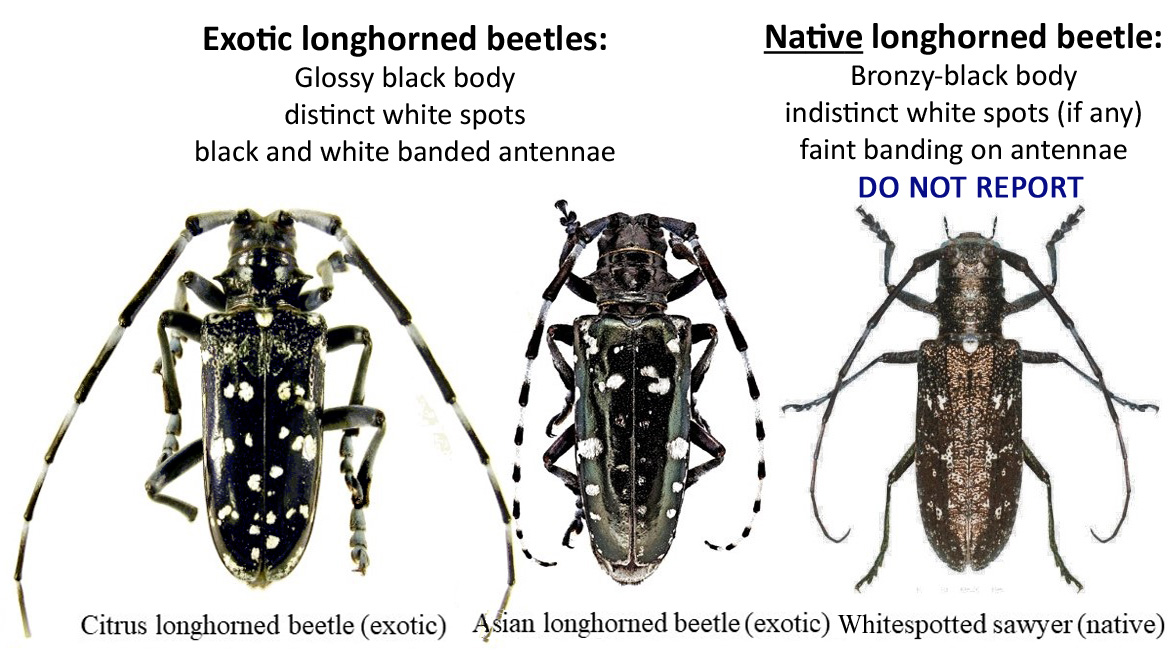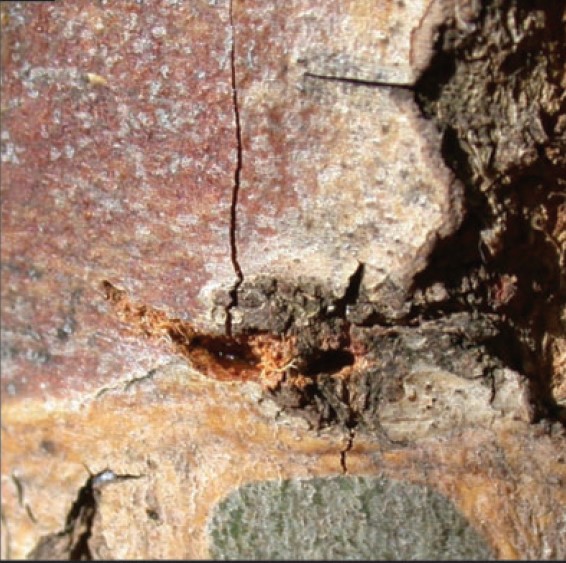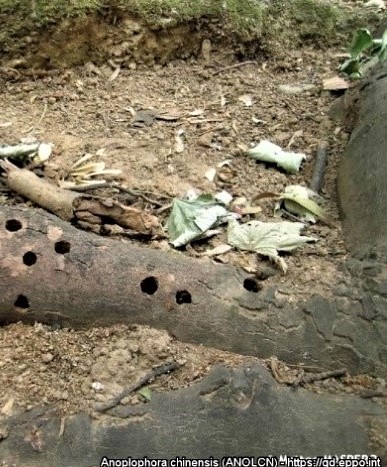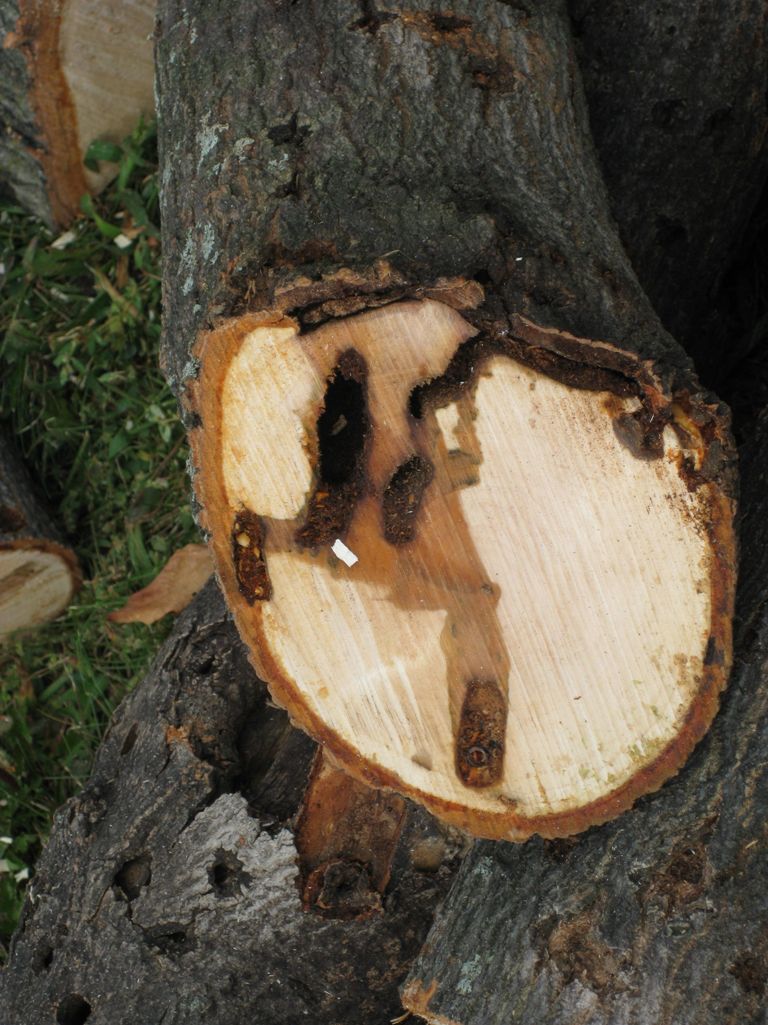DACF Home → Bureaus & Programs → Bureau of Agriculture → Division of Animal and Plant Health → Pest Survey (CAPS) → LHB Resource Page → LHB Damage
Signs and Damage Pictures of ALB and CLB
Asian longhorned beetle (ALB) and citrus longhorned beetle (CLB) share similar host preferences: maple (Acer sp.), birch (Betula sp.), elm (Ulmus sp.), willow (Salix sp.), and horsechestnut (Aesculus sp.). In addition, CLB will readily attack apple (Malus sp.), oak (Quercus sp.), beech (Fagus sp.), citrus (Citrus sp.), and others.
Look for these signs year-round on deciduous host trees:
(click on images to enlarge)
The Beetles:Adult beetles of both species are glossy black with distinct white splotches on the wing covers. They are large (1 - 1-1/2 inches long) and have antennae at least the length of the body. Antennae are starkly banded black and white. |
L-R: Citrus longhorned beetle (exotic), Asian longhorned beetle (exotic), Whitespotted Sawyer (native - do not report)
|
|
Oviposition Sites:Egg-laying sites: |
Egg-laying sites and exit holes of ALB (Photo by Dennis Haugen, USDA Forest Service) |
Egg-laying sites of CLB (Image in Haack et al., 2010) |
Exit Holes:ALB - round holes ~3/8 to 1/2 in diameter on the trunk or branches. A pencil can be inserted at least an inch into an ALB exit hole. |
ALB Exit hole (Photo by Rutgers University) |
CLB Exit holes (Photo by EPPO) |
Tunnels and Galleries:Larval feeding tunnels meander towards the heartwood, where it will then pupate to complete development. Look for these signs in split and cut wood. |
ALB larval tunneling and pupal chambers (Photo by Patricia Douglass, USDA APHIS PPQ) |
CLB larval tunneling - found at the base of the tree and exposed roots (Image in Haack et al., 2010) |
Frass:Frass is sawdust-like material which the beetle larvae push out as it feeds in the tree. This may be found in oviposition sites, exit holes, branch junctions, or on the ground. |
Frass coming out of ALB egg-laying site (Photo by Kenneth R.Law, USDA APHIS PPQ) |
ALB and frass on the ground (Photo by Michael Bohne, USDA Forest Service) |








